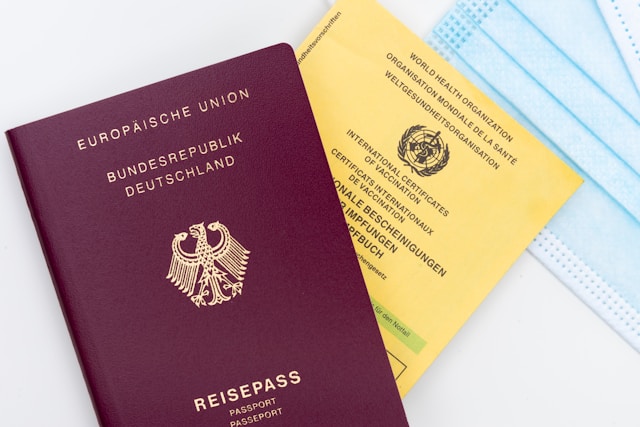In order for a foreigner to drive a car in Japan, the driver’s license obtained in his/her home country must be converted to a Japanese driver’s license. To do so, they must take the Foreign License Conversion Test.
Compared to taking trainings and lessons in Japan and getting a new Japanese driver’s license, conversion the license is an easy process, but the reality is that many foreigners fail the test many times.
This article will explain in detail the low pass rate for the foreign driver’s license conversion, and the points to keep in mind in order to pass the test.
Contents
- The pass rate for converting a foreign license to a Japanese license is 20-30%.
- Reasons for the low pass rate for the foreign license conversion test.
- How to Increase the Pass Rate for Converting Foreign Driver’s License
- Taking a preparation course at a driving school is the shortest way to get a higher pass rate.
The pass rate for converting a foreign license to a Japanese license is 20-30%.
First of all, data on the pass rate for the foreign license conversion test is not publicly available.
However, based on information from driving schools that offer preparation for the test, the pass rate is estimated to be around 20% to 30%.
The pass rate for the regular driver’s license test for Japanese drivers is said to be around 70%, which is low compared to the pass rate for the regular driver’s license test for Japanese drivers.
The content is easier than the test to obtain a new driver’s license in Japan.
In fact, the foreign license conversion test is easier than the Japanese driver’s license test.
For example, while the Japanese driver’s license test consists of 95 questions, and a score of 90 or higher is required to pass, the test for a foreign driver’s license consists of only 10 questions.
The level of difficulty is such that it can be solved with common sense, and all questions are multiple choice questions, with seven correct answers required to pass.
The practical test is also relatively easy, as it does not involve parallel parking, as is done in the provisional license test for Japanese drivers, and the passing standard is 70 points or higher on a 100-point scale.
To put it extremely simply, the following basic skills are required to pass the test.
- Keep driving on the left side of the road
- Pull over wide when turning right or left
- Check mirrors and visual when turning right or left
- Check for safety when entering a priority road
However, the actual pass rate for the foreign license conversion test is as low as 20% to 30%. Why is the pass rate so low?
Reasons for the low pass rate for the foreign license conversion test.
The reasons for the low pass rate for switching to the external exemption may include differences in language and traffic rules, but the biggest factor is a lack of knowledge about the test content.
Many people do not fully understand the contents of the test or take sufficient measures to pass the test, which is why the pass rate is low.
Reason 1: Language Differences
The language for the written test varies depending on the driver’s license center where you take the test. For example, the following languages are supported at the Moriyama Driver’s License Center in Shiga Prefecture.
In addition to Japanese, 20 languages (Arabic, Indonesian, Ukrainian, Urdu, Khmer, Sinhalese, Spanish, Thai, Tagalog, Nepalese, Hindi, Vietnamese, Farsi, Portuguese, Burmese, Mongolian, Russian, English, Korean, Chinese) are prepared.
Reference: Shiga Prefecture “Police Plaza
However, in the practical test, a certain level of Japanese language ability is required, and if the level of Japanese is incomprehensible, that alone tends to increase the difficulty of passing the test.
Reason 2: Lack of knowledge of the test content
The biggest reason that many people fail to the license conversion test is due to “lack of test preparation”.
The Japanese practical test is NOT something you can pass if you can drive according to the rules of the road.
For example, the practical test also includes other aspects besides actual driving skills, such as safety checks before getting into the car, visual checks when turning left or right, and driving posture.
Because the scoring standards in Japan are unique compared to those in other countries, even those who have driven routinely in other countries and are proud of their driving skills will fail the test if they do not have a thorough knowledge of the test content and prepare for it.
For foreigners, you may be saying, “I can drive smoothly, so why did I fail?” The fact that many foreigners do not know this is directly related to the low pass rate.
Differences in traffic rules from home country
One of the reasons for the low pass rate is the difference in traffic rules between Japan and your own home country.
For example, in Japan, we are taught to drive on the left side of the road and “keep left,” whereas in China, people are taught to “drive in the middle.
If you have been driving in your own country for many years, you may have become accustomed to the way of driving in your own, and this may result in a point deduction without you realizing it.
How to Increase the Pass Rate for Converting Foreign Driver’s License
It is most important to take measures to pass the test, not to drive.
Specifically, understanding the points to be deducted from the practical test and preparing for the test at a Japanese driving school are the best ways to ensure success.
Point 1: Understand the points to be deducted from the practical test
The practical test uses a point reduction system. The test starts with a maximum score of 100 points, and a score of 70 or higher is required to pass at the end of the test.
In order to avoid point deductions, it is important to be aware of the points that will be deducted. In fact, even driving methods that are commonplace overseas may result in point deductions in Japan, and there is a possibility that points may be deducted without knowing it.
Let’s start with understanding the points to be deducted.
Getting in and out of the car and driving posture
When getting in the car, walk and turn around the car from the passenger side to check the back of the car and the front of the car before getting into the driver’s seat.
When exiting the vehicle, the driver should observe the following procedures: apply the parking brake, check the rear of the vehicle, and open the door slightly.
The basic driving posture is to sit deeply and adjust the position of the seat and mirrors.
Observance of traffic zones, signals, and signs
Keep to the left side of the road and stop before the stop line at stop signs and red lights for sure.
When changing directions, it is necessary to check behind you and signal with your turn signal.
When changing directions, be sure to check your room mirror and side mirrors and visually.
How to pass obstacles sideways and turn right and left
When avoiding obstacles, remember to confirm and signal the change of direction. When turning right, pull over to the center of the road. When turning left, pull over to the left edge of the road.
Appropriate priority judgment is also important, such as giving way to a car coming from the left at an intersection where there is no traffic control.
Prepare for the Foreign License Conversion Test at a Japanese driving school
Some driving schools offer preparation courses for the Foreign License Conversion Test, so it would be effective to prepare for the test there.
I will repeat this again and again because it is very important, but the biggest reason why people fail the test in Japan is because they have not taken the necessary measures to pass the test.
Even if you are a good driver in your home country, you will easily fail the test because of the unique scoring criteria of the Japanese test.
Many foreigners think that they will pass the test if they take it several times, but unless they prepare for the test appropriately, it is likely that they will fail again and again.
It is difficult to prepare for this “test” by self-study, so it is recommended to prepare for the test intensively at a driving school.
You may be thinking, “Why don’t I just study on my own, figure out the points to be deducted, and then take my own countermeasures?” Some of you may think, but it is quite difficult to develop countermeasures by self-study.
This is because even if you think you are doing well, from the Japanese examiner’s point of view, you may be judged to be not doing well.
You need to be checked by a third party to make sure that you are not actually doing something that will result in points being deducted from your score.
Taking a preparation course at a driving school is the shortest way to get a higher pass rate.
This article explains the low pass rate for the Foreign License Conversion Test and the tips to pass the exam.
Even from a global perspective, the scoring criteria for the test are unique. Therefore, no matter how much a foreigner practice and prepare on his/her own, he/she may not be able to pass the test.
If you want to convert your foreign driver’s license smoothly and, in less time, the best way is to take an intensive course at a driving school.
If you are financially tight, ask an experienced Japanese driver to prepare you for the test, or at any rate, ask a Japanese person to teach you how to drive in Japan. Drivers Academy in Japan also offers test preparation to help you pass the Foreign License Conversion Test.
Please feel free to contact us for more information.


